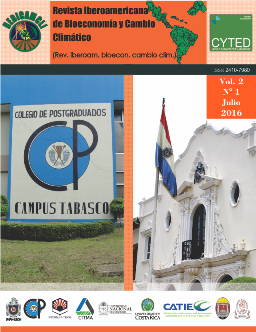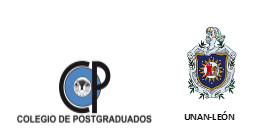Handling of nitrogen in the sugar zone center of Veracruz, México
DOI:
https://doi.org/10.5377/ribcc.v2i1.5677Keywords:
Nitrogen, Aquifer contamination, Sugar cane agroecosystemAbstract
The excessive use of nitrogen in sugarcane (Saccharum officinarum L) is a source of contamination of aquifers. The objective of this study was to evaluate the yield, profitability and leaching losses of nitrogen (N) in sugarcane plantations when the total nitrogen applied is fractionized in several applications. The study was carried out at the “Módulo de Riego I-1 La Antigua”, Veracruz, Mexico. Nine treatments were evaluated, that resulted from the factors: amount of nitrogen applied (250, 200 y 150 kg ha-1) and fractioning of nitrogen applied (2, 3 and 4 applications). The response variables were yield, cost-benefit ratio and nitrogen leaching. It was found that only the nitrogen fractioning showed significant differences for 3 and 4 applications, which resulted in higher yield than 125 t ha-1. The best cost-benefit ratio was found with a dose of 150 kg ha-1 of N fractionized in 3 applications. The lowest nitrogen leaching losses were recorded for 150 kg ha -1 of N fractionized in 3 and 4 applications. Therefore, this nitrogen fertilizer management may result in a higher nitrogen absorption by the crop and less nitrogen will be leached in to the aquifer.Downloads
1035
HTML (Español (España)) 0
Published
How to Cite
License
Copyright (c) 2016 Rev. iberoam. bioecon. cambio clim.

This work is licensed under a Creative Commons Attribution-NonCommercial-ShareAlike 4.0 International License.
Copyright © Rev. iberoam. bioecon. climate change (Graduate School and UNAN-León, School of Agricultural and Veterinary Sciences / Department of Agroecology / Center for Research in Bioeconomy and Climate Cahnge (CRByCC).







